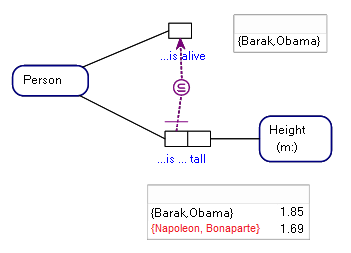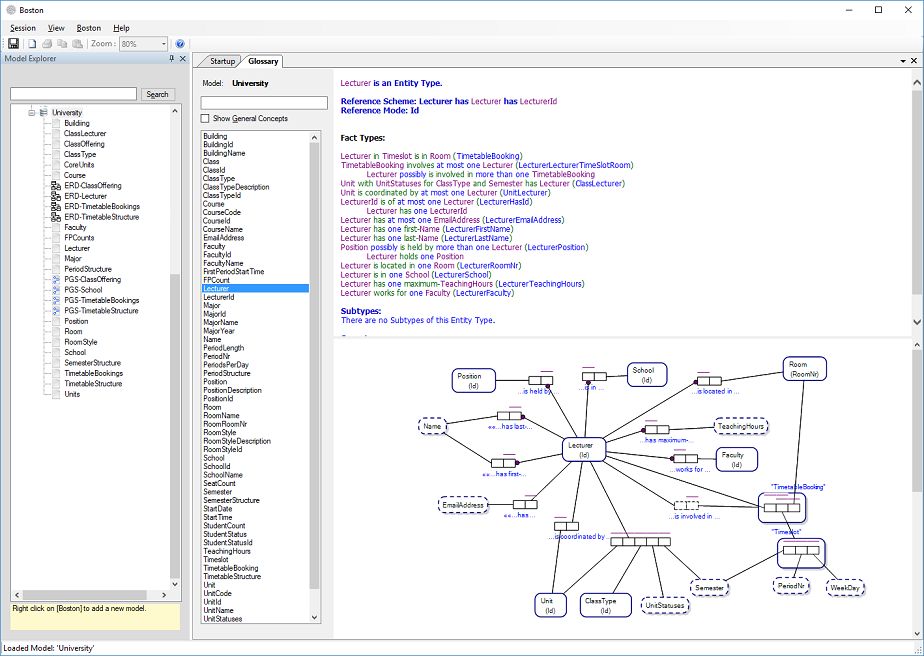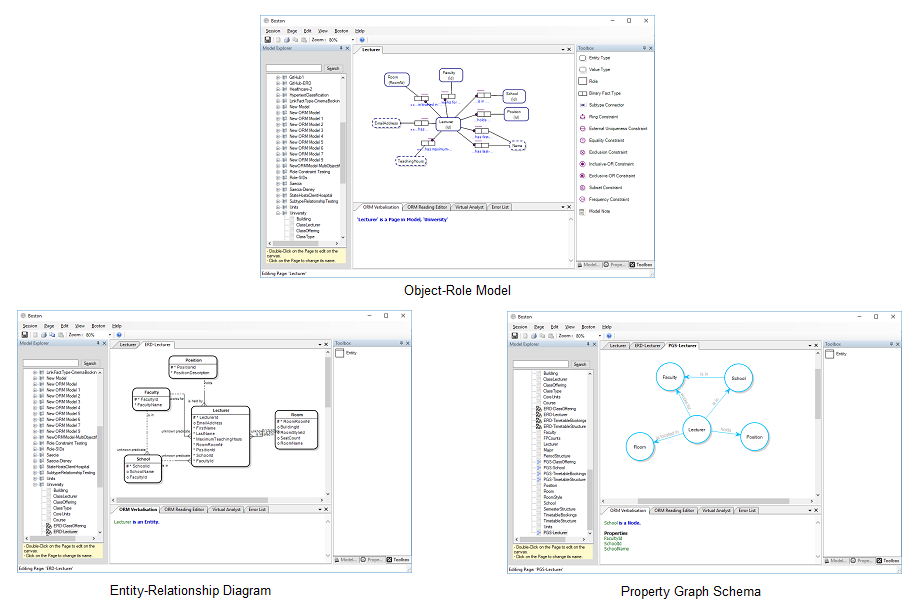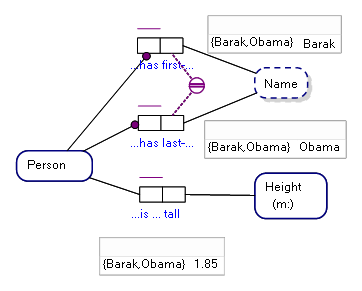Fact-Based Modelling is a form of conceptual modelling that captures the structure of information presented as ‘Facts’. A Fact may be written in the form “Person ‘Barack Obama’ is ‘1.85’ Meters tall’”, from which a Fact Type captures the structure, “Person is Height (in Meters) tall”.
What differentiates Fact-Based Modelling from other, and more simplistic conceptual modelling languages (e.g. Entity Relationship Diagrams and UML Class Diagrams), is that Fact-Based Modelling is semantically rich in the information that it captures about Facts within Fact Types.
For example, ‘Person’ is analysed as being an Entity Type (above) and we express ‘Height (in Meters)’ as a special type of Entity Type that represents a value of unit measurement. Place-holders for values are usually analysed as Value Types, and “Person ‘Barack Obama’ has first-Name ‘Barack’” has Name represented as a Value Type.
But to the stakeholder...they don't need to see or understand the diagram...just the natural language extrapolation of the diagram, which is unique to Fact-Based Modeling and
Object-Role Modeling:

Stakeholders are presented with the natural language verbalisation of the model to understand and validate the model
ORM has a rich set of Constraint types (over 10 different types) that are used to constrain the data that may be stored and represented within a model developed in ORM. For instance, a Subset Constraint may be used to indicate that a Person with a recorded height is a subset of all those Persons who are alive (as below).

A defining feature of Fact-Based Modelling and ORM is that models may be easily converted to Relational Models, Class Models or Property Graph Schemas.
Advantages of Fact-Based Modelling
The natural language extrapolation of models in business language sentences allows stakeholders to easily understand and validate the model.
Glossary View of Your Enterprise Data Model
Boston's Glossary View of the enterprise model presents the core elements of the model in business language sentences.
A glossary of your enterprise data structure is available to staff, in natural language, through any web browser with Boston Enterprise.

Multi-Model Data Management - Your Way
Fact-Based Models are quickly and conveniently converted to graph or relational database structures. Employ our Boston conceptual modelling solution to generate database scripts for your database and FactEngine to query over your database with the worlds easiest graph query language...natural language:

Multi-Model Conceptual Modelling with Boston
Fact-Based Models lend themselves readily to being queried in controlled natural language:

Graph queries over your data with FactEngine





